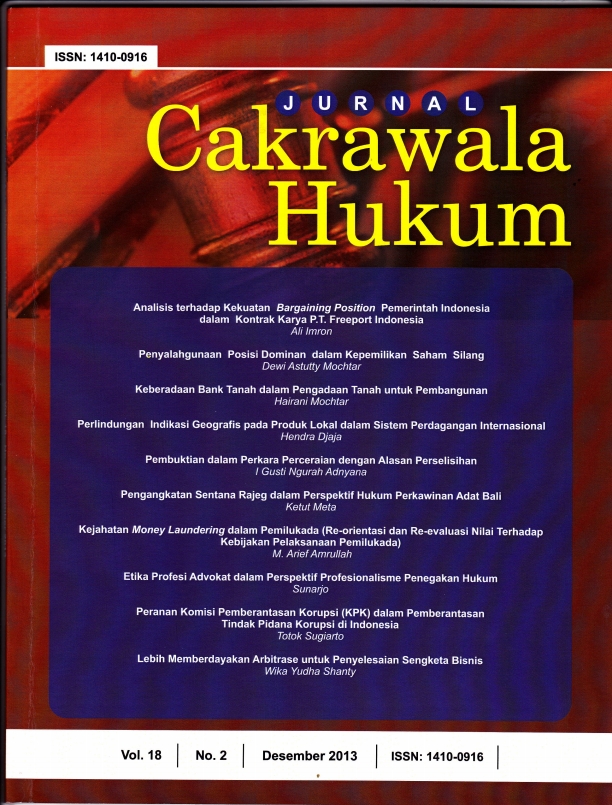PENGANGKATAN SENTANA RAJEG DALAM PERSPEKTIF HUKUM PERKAWINAN ADAT BALI
DOI:
https://doi.org/10.26905/idjch.v18i2.1120Keywords:
Bali, marriage custom law, Sentana RajegAbstract
Adopting sentana rajeg was adopting their own daughter to change the status to be a son. It was because Balipeople followed patrilineal system, in which the descent line was from man line (father) called purusa line.The purpose of adopting sentana rajeg was to continue the next generation, so a family would not mix. So themain purpose was to continue the next generation, especially as the heirs of the person who adopted her.Besides, there was another reason, namely belief of society saying that only a son could deliver the parents’spirits to come into heaven. Sentana rajeg in her marriage, because she had changed the status to be a man, thehusband (the man) should change the status into a woman. In this case, the woman family would proposemarriage to the man family, and later he would be entered to the woman family. Their marriage was callednganyudin marriage, in which the man changed his status to be a woman, and the woman became a man. Thelaw implication from this marriage was the man, since the wedding, did not have a right on inheritance fromhis father, and he would be the heirs from his wife’s family. Their marriage was legal if they had done ceremonycalled meperas ceremony, seen by tetua adat and kepala adat, and it had to be announced to all people in thevillage. Along with the legalized sentana rajeg marriage, the husband of sentana rajeg had changed to be thewife and he had entered the environment of sentana rajeg family. As the heirs, he continued to work the landof ayahan desa. Besides, he also had a right to do the duty as sentana rajeg. One of the important things wasto bury the dead body of the parents, including paying the ceremony of dead body burning, and had to keep thehonor of sentana rajeg family.Downloads
Additional Files
Published
How to Cite
Issue
Section
License
Copyright (c) 2017 Jurnal Cakrawala Hukum

This work is licensed under a Creative Commons Attribution-ShareAlike 4.0 International License.
Authors who publish in this journal agree to the following terms:
The copyright of the received article shall be assigned to the journal as the publisher of the journal. The intended copyright includes the right to publish the article in various forms (including reprints). The journal maintains the publishing rights to the published articles. Authors must agree to the copyright transfer agreement by checking the Copyright Notice column at the initial stage when submitting the article.










